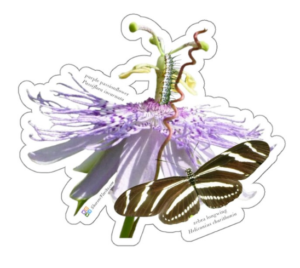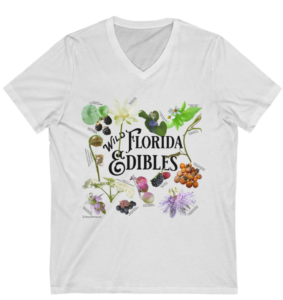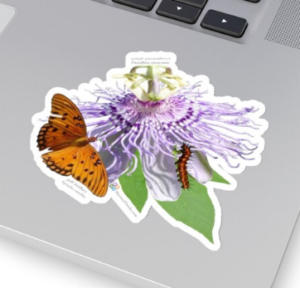Passionflowers Native to Central Florida
Passiflora incarnata
(Purple Passionflower)
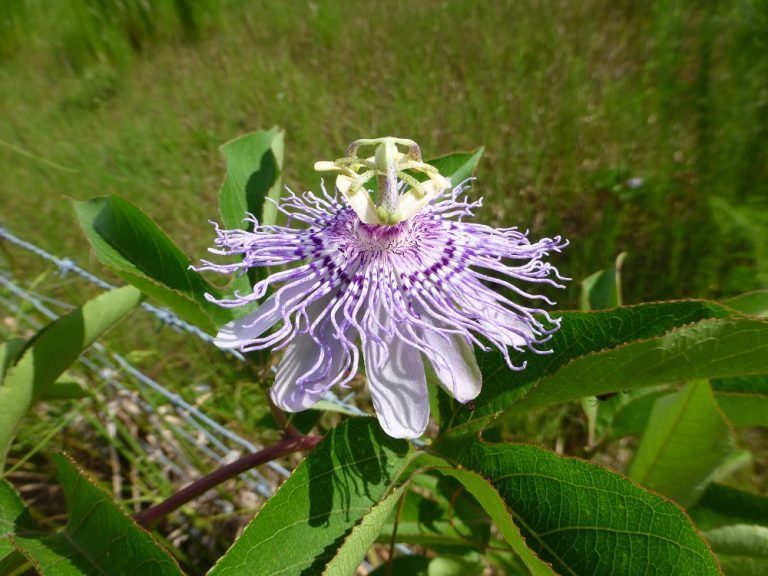
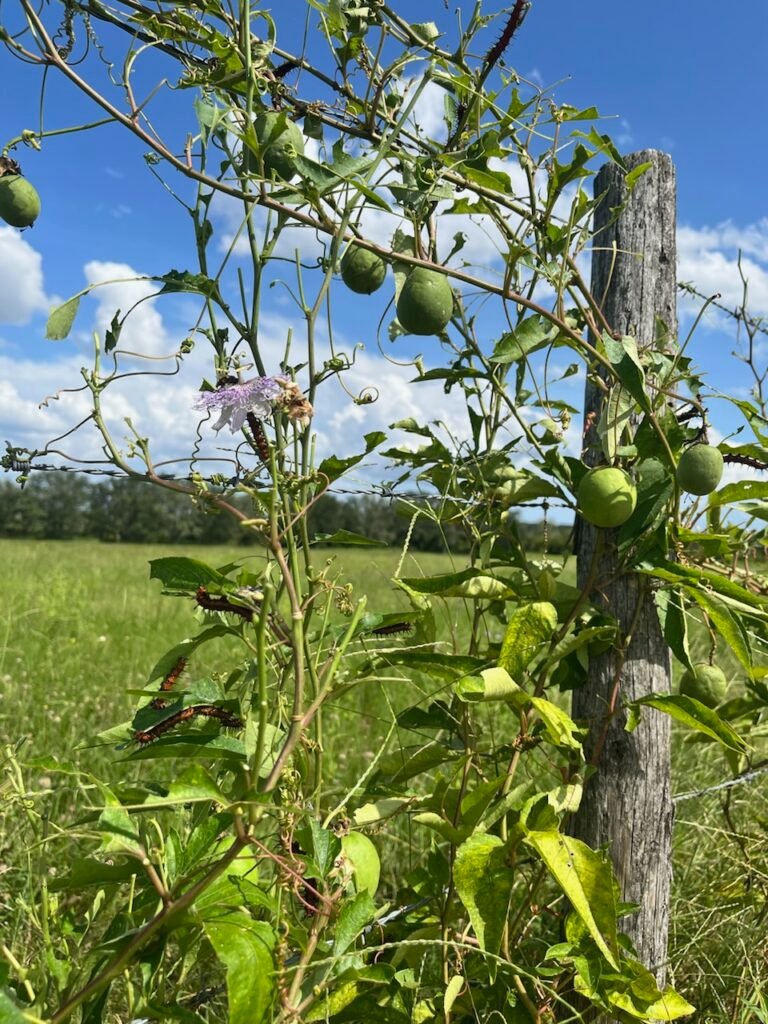
Common Names: other common names include purple passionflower, maypop, purple passion vine, purple passionvine, and apricot vine.
The Atlas of Florida Plants spells the common name “passionflower” which is why I use that spelling rather than two words or calling them passion vines.
Latin Name: Passiflora incarnata.
Family: Passifloraceae, passionflower, family.
Form: Passiflora incarnata is a perennial vine climbing by tendrils, but generally growing prostrate. It spreads by underground stems and can be found coming up quite far away from its original planting.
Leaves: The leaves are finely toothed, deeply (three – five) lobed, 2 1/2″ wide – 6″ long, with glandular petioles.
Flowers: The flower sepals are white, and the petals bluish-white, with a lavender, fringed corona of blue-purple, banded with purple. They are approximately 4″ inches in diameter and appear in the spring, summer & fall.
Fruit/Seeds: The fruit is large, 3 inch, green, and egg shaped becoming fainltly yellowish at maturity. The inside pulpy portion of the fruit is edible. The juice of the pulp is the part used for drinks or frozen ices.
Habitat: It is found in the full sun of open woods & old fields.
Native Range: It is found throughout the state of Florida south to Miami-Dade County, but not in the Keys.
It is native to the following states: AL, AR, DC, DE, FL, GA, IL, IN, KS, KY, LA, MD, MO, MS, NC, OH, OK, PA, SC, TN, TX, VA, and WV.
Landscape Use: In the home landscape it grows in full sun with average moisture.
It has a tendency to move around and will pop up in another flower bed besides the one it was planted in.
It spreads by underground rhizomes and if planted in too shady of an area will actually move itself into the sun. Most gardeners find it annoying that it won’t stay put where they planted it so keep that in mind when growing this beauty.
Wildlife Use: In Central Florida it is a larval food for the zebra longwing, gulf fritillary, and Julia butterflies. Gulf fritillaries prefer this species over the others because they like more sunshine as does the purple passionflower.
Propagation: Propagation is achieved by transplanting rhizomes, sprouting seeds and rooting cuttings.
The rhizomes are generally very deep and break off easily. Sprouts can be up to ten feet apart from each other. Once dug up I prune it into an upside down ‘T’ by cutting the rhizome back to three or four inches on either side of the main stem and then cut the stem down to about ten inches. I generally plant four or five of these pieces in a pot and about half will survive. Be sure to remove flowers and most of the leaves to help the plant survive the transplant shock.
Passiflora lutea
(Yellow Passionflower)
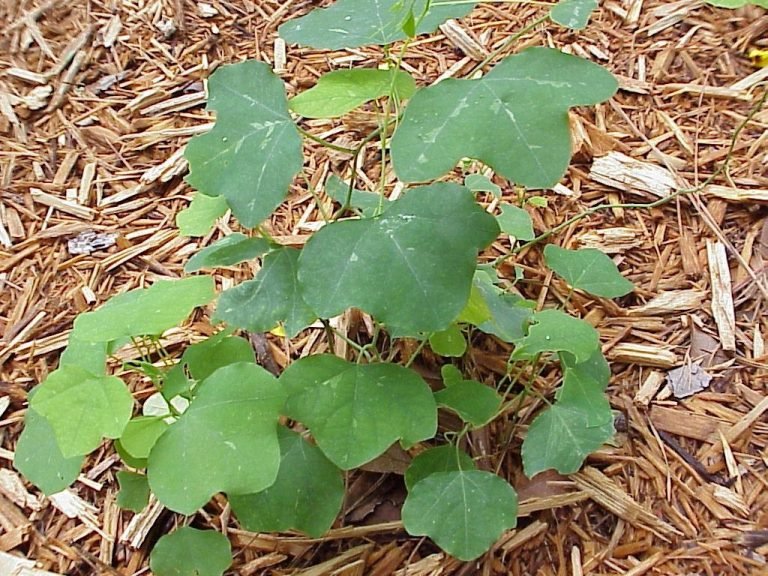
Common Names: yellow passionflower and small passionflower.
Latin Name: Passiflora lutea.
Family: Passifloraceae, passionflower, family.
Form: A perennial vine generally growing along the ground. It, like P. incarnata, will move to its preferred location if it is not happy where originally planted. In my experience it seems to move to find a more moist and rich environment, which it seems to prefer.
Leaves: The leaves are entire, wider than long, with shallow lobes (3/4″ – 4″ wide). The stems are remotely to densely pilose, & the petioles do not have glands.
Flowers: The flowers are small, the sepals are green, the petals are yellow-green, and it is 1/2″ to 3/4″ diameter. The blooms appear in the spring, summer, & fall.
Fruit: The fruit is a small berry about 3/8 of an inch in size. Unripe fruit is green and turns to black at maturity.
Habitat: It grows in the part shade of woodlands.
Native Range: It is found growing naturally in northern Florida south to Hernando & Lake Counties.
Landscape Use: In the home landscape it grows in full sun to part shade with average to moist, composted, soils.
Wildlife Use: In Central Florida it is a larval food for the zebra longwing, gulf fritillary and Julia butterflies.
Propagation: Propagation is achieved by transplanting rhizomes, seeds and cuttings. The rhizomes are not as deep as the purple passion vine, but will break easily. I generally plant four or five pieces of rhizomes in a pot and about half will survive. Be sure to remove all but three of four leaves to help the plant survive the transplant shock.
Passiflora suberosa
(Corkystem Passionflower)

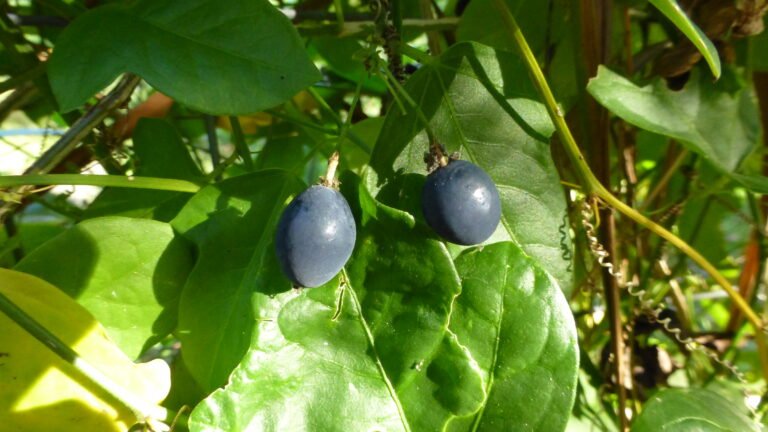
Common Names: corky passionvine and corky passionfruit.
Latin Name: Passiflora suberosa.
Family: Passifloraceae, passionflower, family.
Form: Is a perennial vine that climbs by tendrils.
Leaves: Its leaves are generally three lobed, but may be completely entire. They grow from 1 ½ to 4 inches in length with glandular petioles. The stem becomes woody and winged with age.
Flowers: What appears to be the flower ‘petals’ are actually the sepals of the flower and are long & greenish white and not showy at all. They are quite small at about an inch in size. It blooms all year.
Fruit: The fruit are small berries that turn a deep purple once ripe. They are only about 1/8 of an inch long. Fruit matures at different times so many green and deep purple fruits are usually found on the plant.
Habitat: It grows in the part shade of hammocks and shell middens in Florida.
Landscape Use: In the home landscape it is much more well behaved than the other two because it does not spread aggressively by runners but stays as one plant. However if the vine gets large, and spreads out to cover a large area, it may root at some of the leaf nodes when they touch the ground. It is easy enough to keep in control. Any rooted portions of the plant can be transplanted very easily.
It prefers part shade and dry soils. If not given a support, or trellis, it will clamber along the ground and climb up nearby vegetation.
Wildlife Use: Wasps and bees use the flowers as a nectar source.
In central Florida it is used as a larval host plant by zebra longwing, gulf fritillary, and Julia butterflies.
Propagation: When starting seeds it is best to soak them in warm water over night. Do not plant them too deeply and be sure to keep them warm and moist. If sprouting in the cooler months use a heating pad underneath and plastic wrap on top to keep in the warmth and moisture. I actually use a large plastic container with a clear lid to keep them warm and moist. Do not let the seeds dry out … frequent mistings of water will help. Also, do not plant the seeds too deeply. My rule of thumb is to plant them as deep as they are wide and just a light sprinkling of soil on top.
For more detailed information on corkystem passionflower go to my article – Corkystem Passionflower.
The Remainder of Florida's Native Passionflowers:
Passiflora multiflora (whiteflower passionflower) is endangered and found in Monroe Keys and Miami-Dade Counties.
Passiflora sexflora (Goatsfoot) grows in Miami-Dade County.
Passiflora pallens (Pineland passionflower) and it is found in Broward, Collier, Miami-Dade and Monroe Mainland Counties.
Exotic Non-Native Passionflowers:
Scarlet passion flower (Passiflora coccinea) is native to South America.
Purple granadilla, (Passiflora edulis) is native to South America.
Fetid passion flower, (Passiflora foetida) is native to tropical America.
My Etsy Store items that have purple passionflowers in the design!
Next Article: Scarlet Morning Glory

